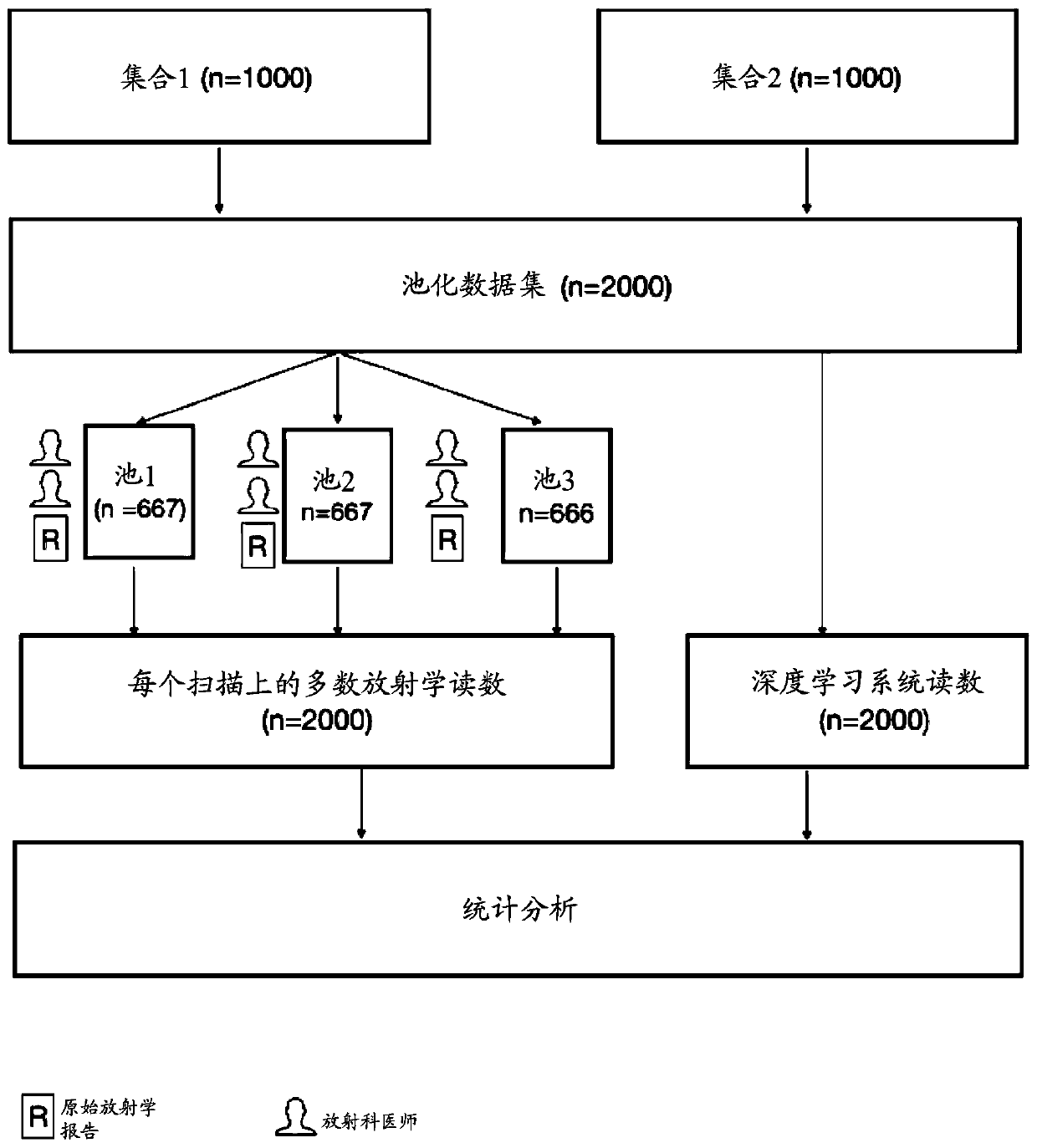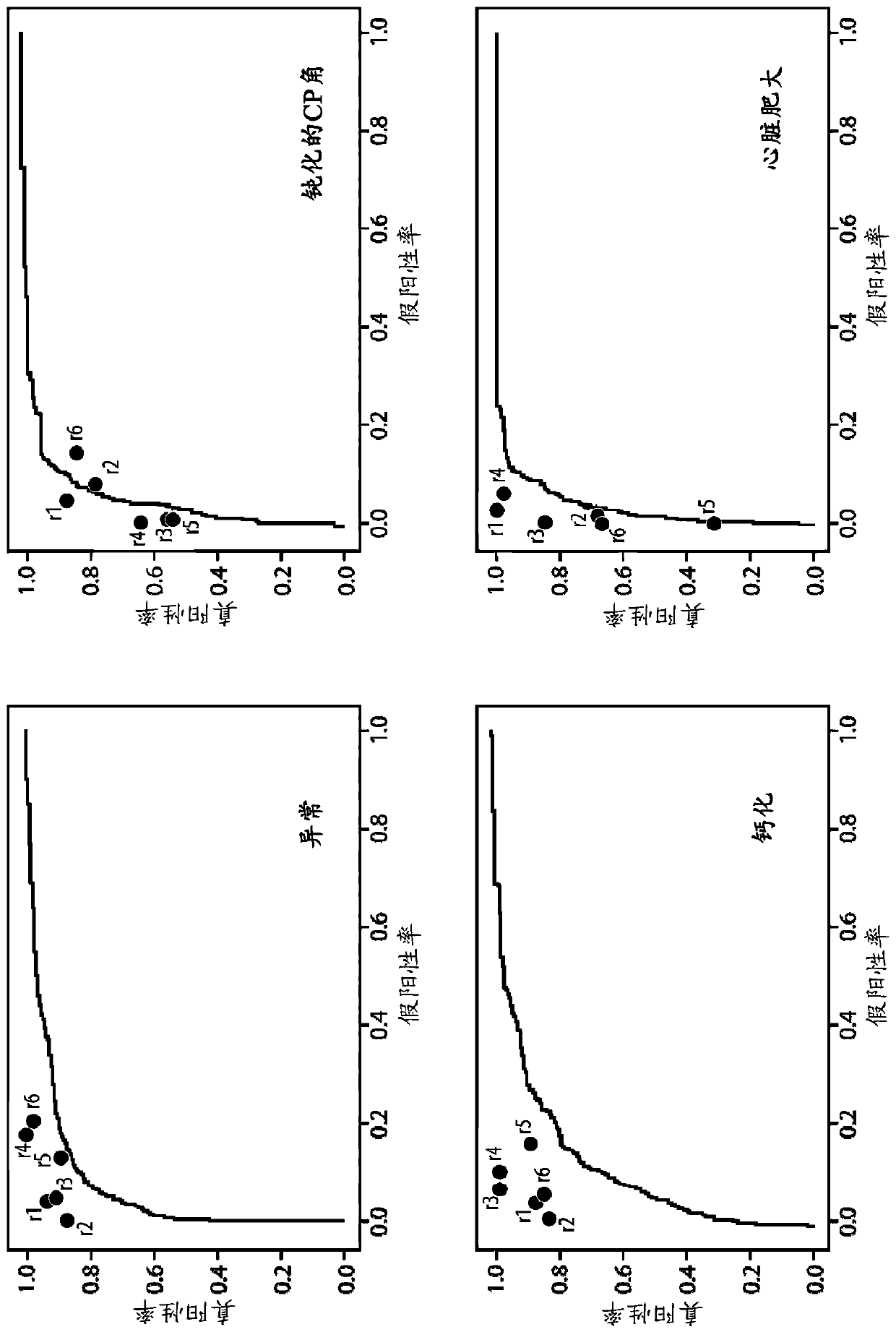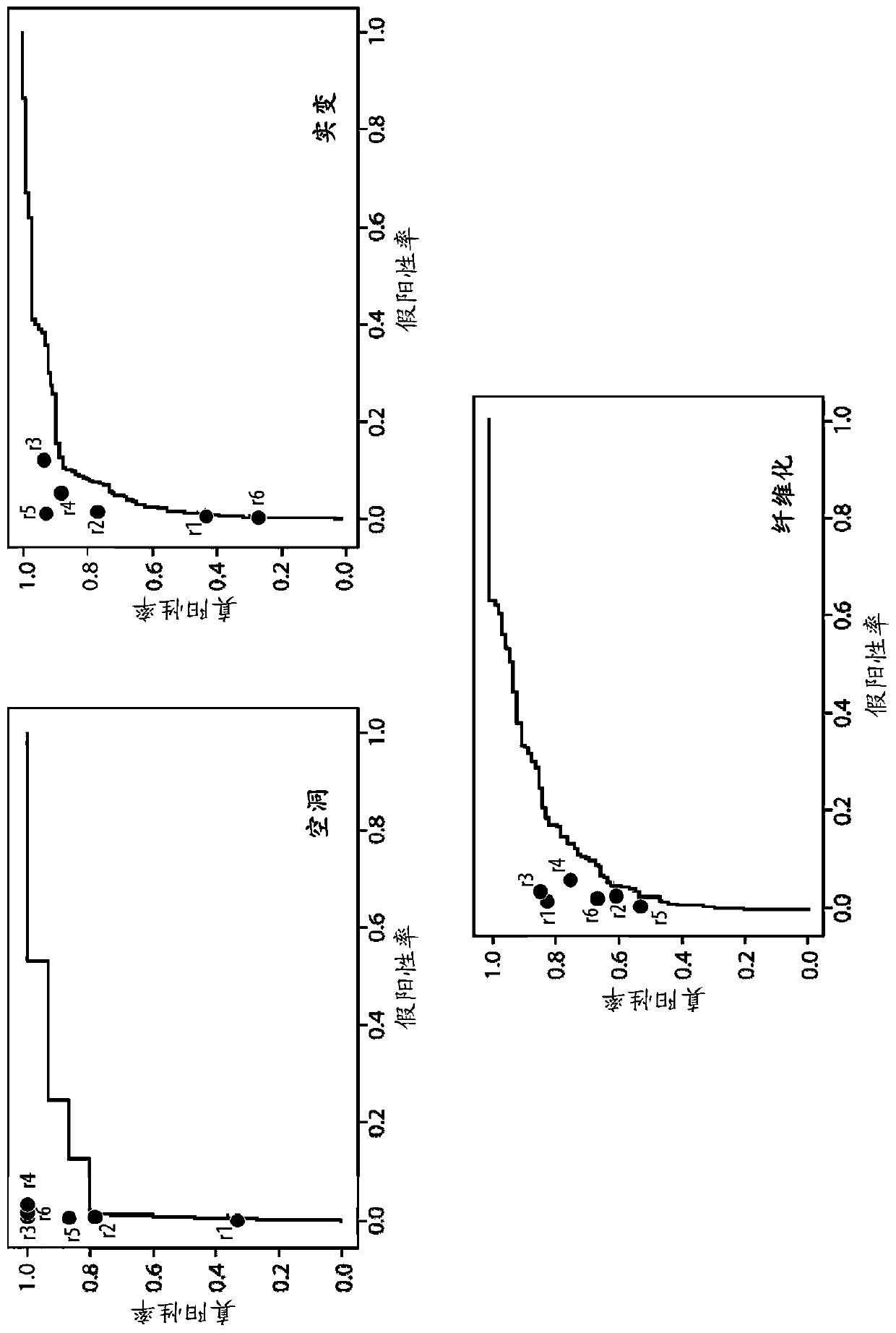Application of deep learning for medical imaging evaluation
A deep learning, medical imaging technology, applied in medical imaging, understanding medical/anatomical patterns, applications, etc., can solve complex problems
- Summary
- Abstract
- Description
- Claims
- Application Information
AI Technical Summary
Problems solved by technology
Method used
Image
Examples
example 1
[0046] Example 1 Radiologist Validation of a Deep Learning System to Detect Chest X-ray Abnormalities
[0047] 1.1. Method
[0048] 1.1.1 Algorithm Development
[0049] 1,200,000 radiographs and their corresponding radiology reports were used to train a convolutional neural network (CNN) to identify abnormalities. A natural language processing algorithm was developed to parse unstructured radiology reports and extract information about the presence of abnormalities in chest radiographs. These extracted findings are used as labels when training the CNN. A single network was trained to recognize normal radiographs, as well as chest radiograph findings "blunted CP angle", "calcification", "cardiac hypertrophy", "cavitation", "consolidation", "fibrosis", " enlarged hilum", "cloudiness" and "pleural effusion". Table 1 lists the definitions used when extracting radiological findings from the reports. These findings are called tags. Label extraction accuracy is measured relativ...
example 2
[0109] Example 2 Deep Learning Solution qXR for Tuberculosis Detection
[0110] Qure.ai's qXR is designed to screen and prioritize abnormal chest X-rays. Algorithms automatically identify the 15 most common chest X-ray abnormalities. A subset of these anomalies suggestive of typical or atypical tuberculosis were grouped together to generate a "TB Screening" algorithm within the results. The TB screening algorithm is designed to replicate the screening of radiologists or physicians' chest radiographs for abnormalities suggestive of TB prior to microbial confirmation. qXR is the first CE-certified AI-based chest X-ray interpretation software. qXR is integrated with the Vendor Neutral Integration Process and works with radiographs generated from any radiograph system (CR or DR). qXR screens for TB and also identifies 15 other abnormalities, so patients can be informed of the non-TB condition they may have.
[0111] qXR integrates seamlessly with Vendor Neutral Archives (VNA) ...
PUM
 Login to View More
Login to View More Abstract
Description
Claims
Application Information
 Login to View More
Login to View More - R&D
- Intellectual Property
- Life Sciences
- Materials
- Tech Scout
- Unparalleled Data Quality
- Higher Quality Content
- 60% Fewer Hallucinations
Browse by: Latest US Patents, China's latest patents, Technical Efficacy Thesaurus, Application Domain, Technology Topic, Popular Technical Reports.
© 2025 PatSnap. All rights reserved.Legal|Privacy policy|Modern Slavery Act Transparency Statement|Sitemap|About US| Contact US: help@patsnap.com



